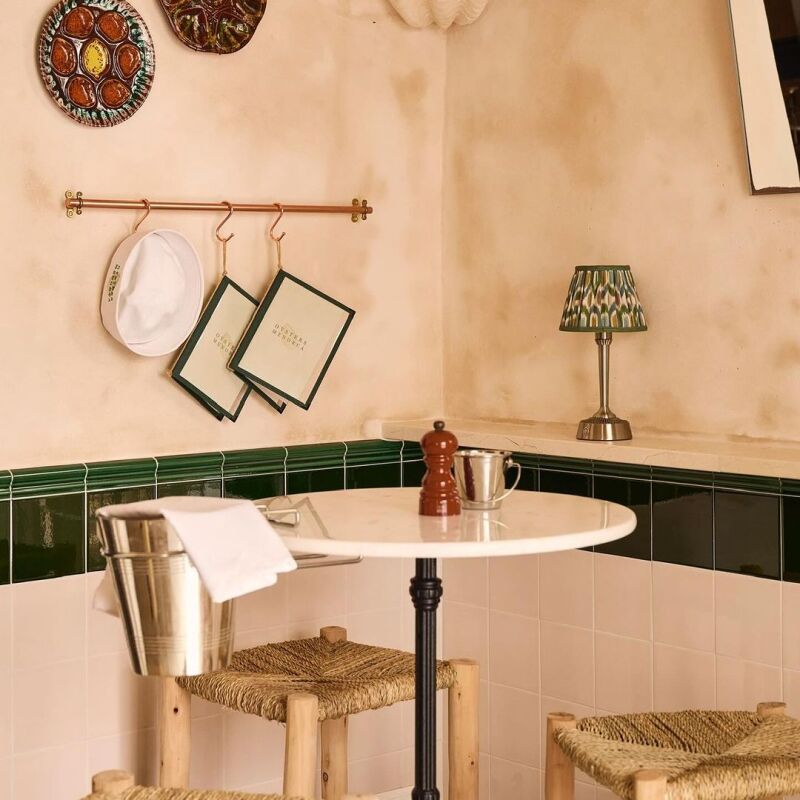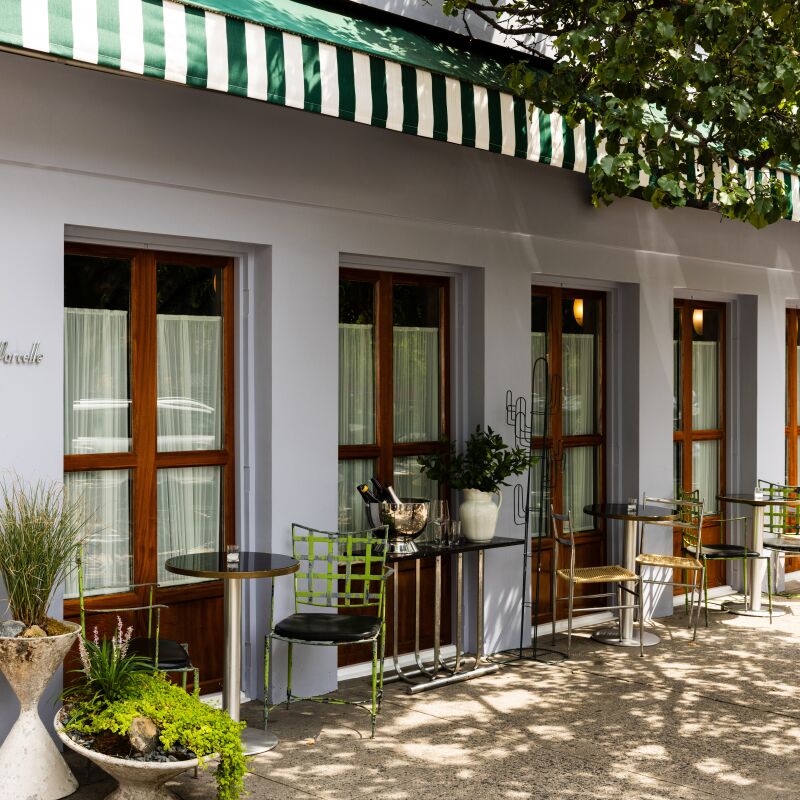As though The Lisboans—a bright, apartment-style hotel in Lisbon’s city center (see Apartments in Portugal with Vintage Style, Breakfast Included)—wasn’t already charming enough, here’s another reason to book a stay: Now you can venture downstairs for dinner at their restaurant, Prado Restaurante, housed in a portion of a former 19th-century candied fruit and preserves factory. When the team—architect Marta Fonseca, who also worked on converting a former factory into The Lisboans, and designers ArkStudio—found it, the factory was roofless, crumbling, and overgrown with vegetation. Though they enclosed it and restored the interiors, they kept a sense of the wild and overgrown, leaving the old factory machinery in place along the ceiling and introducing new plants that trail from the beams. It’s a fitting interior for a farm-to-table restaurant whose name means “meadow” in Portuguese. Take a look at the before and after, plus Prado Mercearia, the small market next door.
“After” photography by Rodrigo Cardoso, courtesy of Prado Restaurante.
Prado Restaurante, After






Prado Mercearia, After




The Factory, Before




Planning a trip to Lisbon? See our Lisbon Travel Guide, and stop into a few of our favorite spots:
- Dear Breakfast: A Whitewashed, Architectural Cafe in Lisbon, High/Low Edition
- Elegant Minimalism in Lisbon: Santa Clara 1728
- The Lisboans: Apartments in Portugal with Vintage Style, Breakfast Included
N.B.: This post is an update; the original story ran on August 8, 2018.




Have a Question or Comment About This Post?
Join the conversation